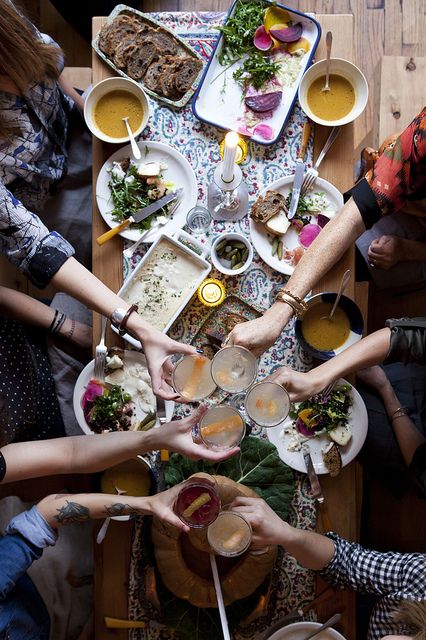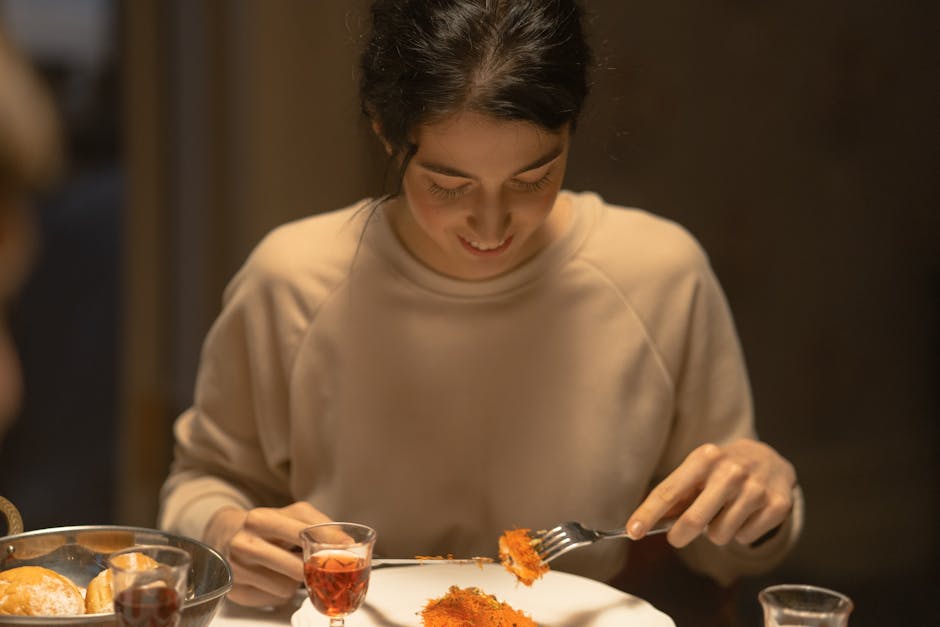Have you ever found yourself in the midst of a heated debate over whether the proper way to eat spaghetti is with a fork or a spoon? Or perhaps you were at a loss for words when your dinner companion looked at you in horror for daring to add salt to your meal before tasting it? Welcome to the world of dining etiquette, where the traditions of France and Italy collide in a battle of cultural contrasts. From the art of the aperitif to the importance of the after-dinner espresso, prepare to explore the quirky and delightful differences between French and Italian dining customs. So grab a seat at the table and get ready for a culinary adventure filled with laughter, confusion, and maybe even a little bit of pasta-induced chaos. Bon appétit!
French Dining Etiquette: A Focus on Elegance and Tradition
So you want to dine like a true French royalty? Well, buckle up, buttercup, because French dining etiquette is no joke. It’s all about elegance and tradition, baby!
First things first, you gotta master the art of table manners. None of that elbows-on-the-table nonsense, s’il vous plaît! Keep those puppies tucked in and your posture straight. And don’t even think about starting your meal before the host does. Patience is a virtue, mon ami.
Oh, and let’s not forget about the wine. In France, wine is practically a food group. So, when in doubt, just remember this motto: “When in France, drink like the French do.” And yes, that means swirling, sniffing, and sipping like a pro. Bottoms up!
And finally, the pièce de résistance: dressing to impress. French dining is all about sophistication, so leave your Crocs and sweatpants at home, okay? Opt for something chic and stylish instead. Dress to impress, darling, because in the world of French dining, your outfit is just as important as the food on your plate. Bon appétit!

Italian Dining Etiquette: A Celebration of Food and Family
When dining in Italy, there are a few key etiquettes to keep in mind that will help you fully embrace the culture of food and family. Italians take their meals seriously, so it’s important to show your respect for the culinary traditions of this beautiful country.
First and foremost, remember that meal times are meant to be a celebration of flavors and relationships. Sit back, relax, and enjoy the experience. Italians like to take their time with meals, so don’t rush through your food. Savor each bite and engage in lively conversation with your dining companions.
Another important rule to follow is to never ask for parmesan cheese to top off your seafood pasta dish. Italians take their food seriously, and mixing cheese with seafood is considered a big no-no. Embrace the flavors of each dish as it was intended by the chef.
Lastly, don’t be afraid to get a little messy while eating. It’s all part of the fun! Use your hands to pick up that juicy slice of pizza or to twirl your pasta like a pro. Just remember to always keep your napkin close by to clean up any spills. Buon appetito!

The Role of Wine in French Dining Culture
First things first - in French dining culture, wine is not just a drink, it’s a way of life. From the moment you sit down at a French dining table, you’ll be handed a glass of wine faster than you can say “Bon appétit!” So why is wine such an integral part of the French dining experience? Well, the French believe that wine enhances the flavors of their food and brings people together in a way that no other beverage can.
When it comes to pairing wine with food in France, there are some hard and fast rules that everyone seems to know. For example, red wine goes best with red meat, while white wine is the go-to for fish and poultry. But the French take it a step further by matching specific wines with specific regional dishes. For example, in Burgundy, it’s all about pairing Pinot Noir with Coq au Vin, while in Alsace, Riesling is the wine of choice for Choucroute Garnie.
Another interesting aspect of French dining culture is the ritual of toasting with wine. In France, it’s common to make eye contact with each person at the table as you clink glasses and say “Santé!” – which means “Health.” It’s considered bad luck to not make eye contact during a toast, so be sure to lock eyes with your dining companions before taking a sip.
And let’s not forget about the end of the meal, when a dessert wine or aperitif is often served to cap off the dining experience. Whether it’s a sweet Sauternes paired with a decadent tarte Tatin or a crisp Calvados to cleanse the palate after a rich meal, the French know how to end a meal on a high note. So next time you find yourself dining in France, raise a glass of wine and toast to the incredible dining culture that has made French cuisine famous worldwide!

The Importance of Espresso in Italian Dining Traditions
Let me tell you, espresso is the heart and soul of Italian dining traditions. It’s not just a drink, it’s a way of life. Italians take their coffee seriously, and espresso is the pinnacle of coffee perfection.
When you sit down at an Italian restaurant, the first order of business is to order an espresso. It’s not just a drink to wash down your meal, it’s a ritual. The waiter will bring it to you in a tiny little cup, perfectly brewed and full of flavor. You take a sip and suddenly, life makes sense again.
Espresso is not just a caffeinated beverage, it’s a social occasion. Italians gather at cafes to sip on their espressos and catch up with friends. It’s a time to relax, unwind, and enjoy the simple pleasures of life. Plus, let’s face it, it’s a great excuse to take a break from work and indulge in a little caffeine buzz.
So next time you find yourself in Italy, don’t forget to embrace . Take a moment to savor the rich aroma, the bold flavor, and the warm embrace of that tiny cup of perfection. Because when it comes to espresso, Italians don’t mess around.

Differences in Table Manners and Social Behavior
Have you ever noticed how table manners can vary drastically from one culture to another? It’s like watching a comedy show where everyone has their own set of rules to follow. Let’s take a closer look at some of the most amusing around the world.
First off, let’s talk about the use of utensils. In some countries, it’s perfectly acceptable to eat with your hands, while in others, you might get scolded for not using a fork and knife. And don’t even get me started on chopsticks – mastering those bad boys takes years of practice!
Then there’s the issue of slurping your soup. In some cultures, it’s a sign of appreciation for the chef, while in others, it’s considered rude and uncouth. It’s all about finding that delicate balance between enjoying your meal and not offending your dining companions.
And let’s not forget about social behavior at the table. In some countries, it’s polite to finish every last morsel on your plate, while in others, leaving a little bit behind is a sign that you’re full and satisfied. It’s a real-life game of ‘guess the right thing to do’ every time you sit down for a meal!
Handling the Bill: Contrasting Attitudes towards Splitting the Check
When it comes to handling the bill, there are two distinct camps with very different attitudes towards splitting the check.
For some, the idea of splitting the bill evenly down to the very last cent is the only way to ensure fairness. These individuals believe in precisely calculating who ordered what and how much each person owes. They are the ones who whip out their calculators and pore over the receipt with laser-like focus, determined to avoid any hint of overpaying. They see no room for negotiation when it comes to bill-splitting and will defend their stance with passion.
On the other hand, there are those who take a more relaxed approach to splitting the bill. These individuals believe in a more laid-back, casual method of divvying up the expenses. They are the ones who suggest simply splitting the bill down the middle, regardless of who ordered what. They are all about keeping things simple and avoiding any potential awkwardness or tension that may arise from a more complicated payment arrangement.
Whichever camp you fall into, one thing is for certain: handling the bill can be a source of much debate and disagreement among friends and dining companions. Whether you’re a meticulous bill-splitter or a carefree splitter, just remember to approach the situation with a sense of humor and goodwill. After all, it’s just money, right?
Navigating Cultural Norms: Tips for Dining in France and Italy
So you’ve found yourself in France or Italy, ready to dive headfirst into the culinary delights these countries have to offer. But before you start feasting on baguettes and pasta, it’s crucial to understand and respect the cultural norms surrounding dining etiquette in these countries. Here are some tips to help you navigate your way through a meal without committing any major faux pas:
In France, bread is a staple at the dinner table. However, make sure to never butter your bread before a meal – in fact, it’s considered bad manners. Instead, tear off a small piece and enjoy it throughout the meal to soak up sauces or savor the flavors. Just make sure not to ask for ketchup to go with your baguette – it’s a definite no-no!
When dining in Italy, be prepared for a leisurely meal. Italians take their time when it comes to eating, so don’t be surprised if a meal lasts for hours. Use this time to savor each course and enjoy the company of your dining companions. And remember, never order a cappuccino after a meal – it’s a morning drink in Italy, so stick to an espresso if you need a caffeine fix.
It’s also important to be mindful of your table manners in both countries. Keep your hands on the table at all times, but never your elbows. And be sure to never cut your pasta in Italy – always twirl it with a fork. And when in doubt, follow the lead of your fellow diners. Bon appétit and buon appetito!
FAQs
What is the biggest difference between French and Italian dining etiquette?
The biggest difference between French and Italian dining etiquette lies in the use of utensils. While the French are known for their elegant and precise use of cutlery, the Italians tend to employ a more hands-on approach, often using their hands to eat certain dishes.
Are there any specific rules I should follow when dining in France?
Oh, absolutely! When dining in France, make sure to keep your hands on the table at all times (none of that hand-waving about), and always take small bites, savoring each one. Oh, and don’t forget to say “Bon appétit” before digging in!
What about dining in Italy? Any customs I should be aware of?
Well, in Italy, it’s all about the pasta. Don’t even think about asking for Parmesan cheese to sprinkle on your spaghetti carbonara - it’s a sin! And be sure to leave a little food on your plate at the end of the meal to show your host that you’ve had enough.
How should I dress for a fancy meal in France?
When dining in France, it’s important to dress the part. Leave the sneakers and baseball caps at home and opt for something chic and sophisticated. Think tailored suits or elegant dresses – you want to blend in with the fashionable Parisians, after all!
Can I expect a long, leisurely meal when dining in Italy?
Oh, absolutely! Italians take their time when it comes to eating, so don’t expect to rush through a meal in Italy. Enjoy each course slowly, sip on some wine, and indulge in lively conversation – that’s what dining Italian-style is all about!
—
Bon Appétit or Buon Appetito?
So, next time you find yourself torn between choosing a croissant or a cannoli, remember that dining etiquette in France and Italy may be as different as night and day, but both cultures share a love for good food and good company. Whether you prefer the refined elegance of French dining or the hearty warmth of Italian traditions, one thing is for sure – you’ll never leave the table hungry! So, raise a glass of Bordeaux or a glass of Chianti, and here’s to cultural contrasts that make every meal a delicious adventure! Au revoir, ciao, and happy eating!






